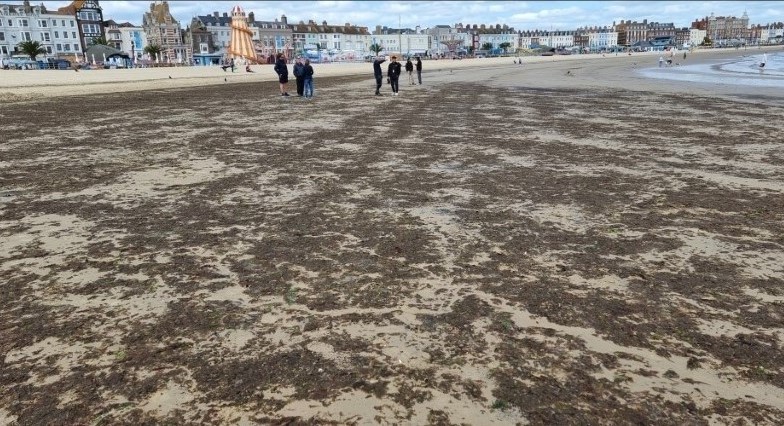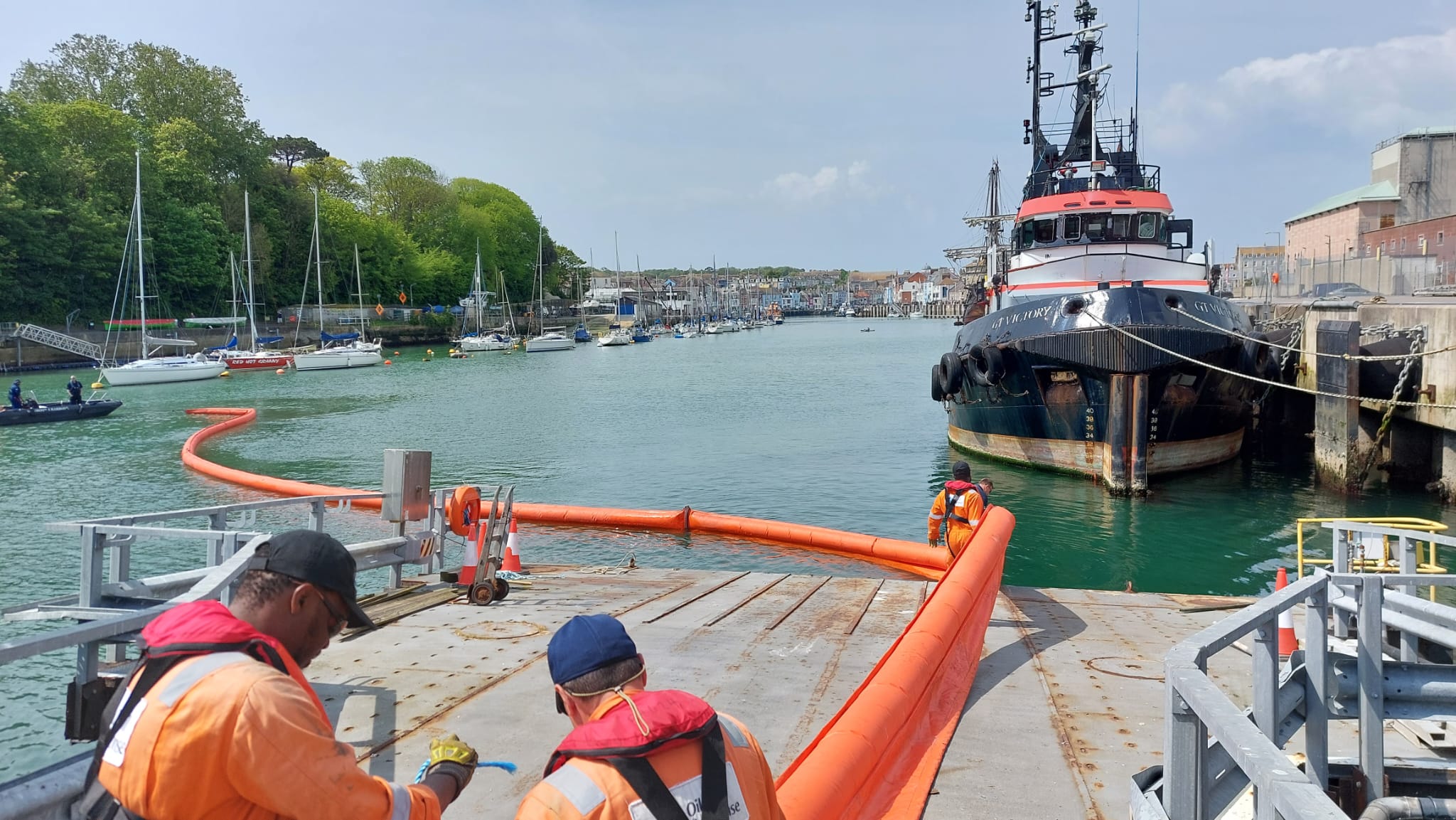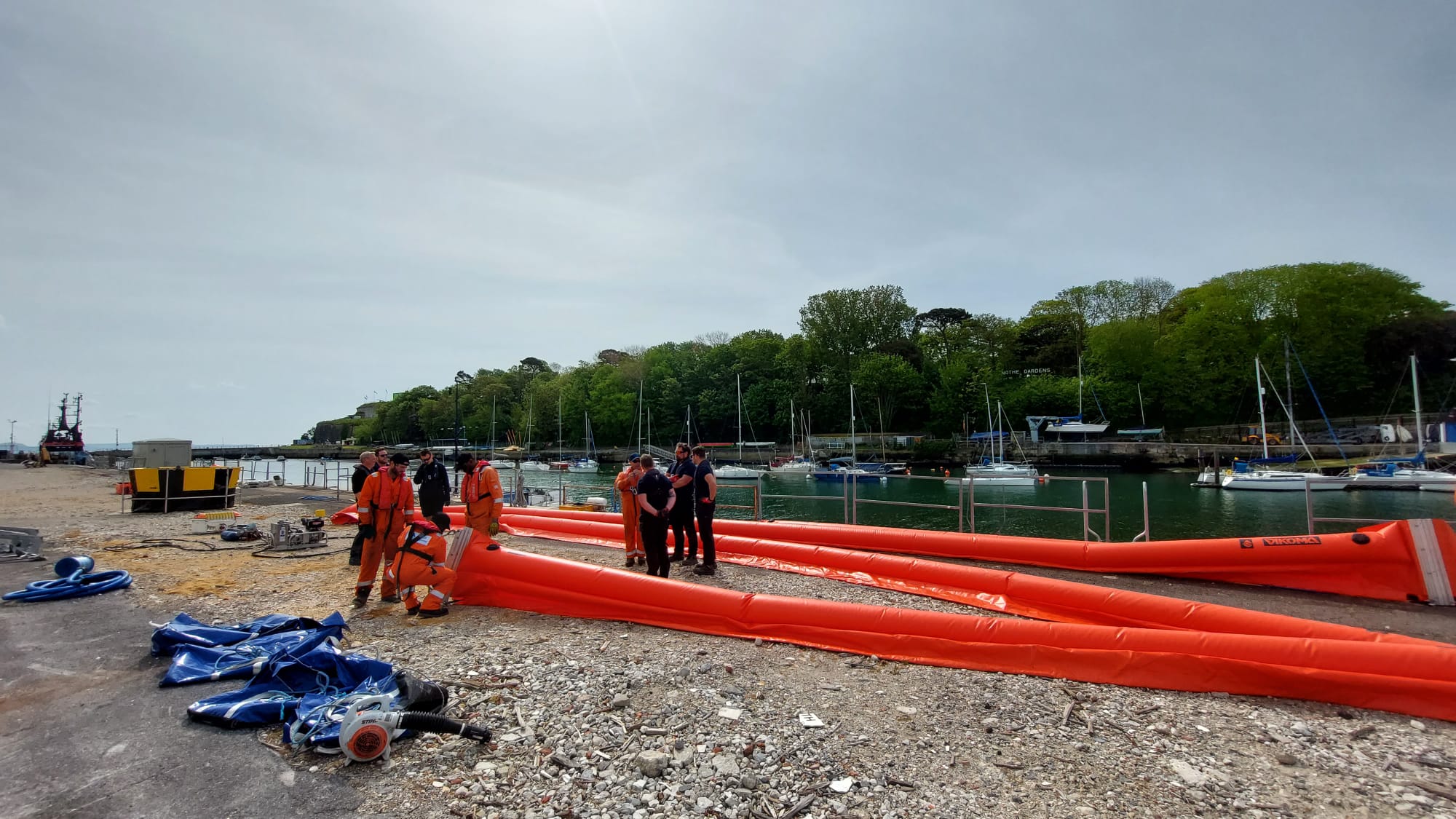
In May, the UK-based members of Operations Team 1A left the comfort of our Southampton base for a week of exercises, team building and organised fun. The week started with a presentation from our Senior Response Specialist, Mbami Manzo, introducing our Shoreline Cleanup Assessment Techniques (SCAT) and outlining the key features and processes involved in SCAT surveys. Mbami explained in depth the differing SCAT techniques and valuable tools and aids associated with it.
After the presentation, the team arrived at Weymouth Beach, UK, where they were given an example of a SCAT form and shoreline treatment form with seaweed on the beach acting as "oil”. The team from Weymouth Harbour were tasked with surveying a different area of the shoreline and suggested possible clean-up techniques that they could employ should that area of the beach be affected by an oil spill.
As a very popular beach for locals and tourists at all times of the year, during this exercise, someone raised a valid point that crowd control could be a significant challenge in an actual response on Weymouth Beach, and the team discussed possible solutions and ways to prioritise the clean-up to minimise public disruption.
Following discussions around SCAT on Weymouth Beach, the team relocated to Weymouth Harbour, where the manmade structures around the harbour encouraged a different thought process and approach when filling out the SCAT form and potential clean-up techniques. The day was rounded off with an overview of the data and different response strategies suggested throughout the day.
Since the harbour had experienced a relatively recent oil release from a damaged vessel, the main focus for the following day was on the containment of a compromised vessel and possible oil recovery techniques. Along with Weymouth Harbour, Lyme Regis and Bridport Harbour team members joined us for the deployment. It was agreed that OSRL equipment would be used for the exercise to allow the team to re-familiarise themselves with booming around a vessel and using a skimmer. This gave the harbour teams valuable insight into oil recovery, which some staff had not previously experienced.

Once the booms had been inflated and connected, a section of rope was attached to the front end of the boom and used to help manoeuvre it around the casualty vessel. Once the boom had been carefully passed along the vessel's starboard side, the rope section was passed to personnel on the quayside and walked further along the quay wall. This ensured that at least one section of boom lay tight to the quay wall on either side of the vessel to provide an effective seal.
When the boom was in place, and anchors were put in to secure them, the team focused on the skimmer deployment. It was decided that the safest and most efficient way to deploy the skimmer would be off the open bow of the vessel.
Equipment was lowered onboard the casualty vessel, and the skimmer was set up, deployed, and run from the open bow. Senior Response Specialist Ashley Parsons led a brief informal discussion focusing on different recovery techniques for different types and stages of spilt oil. Following this deployment, the OSRL booms were inflated and left overnight in the D-shed as part of the boom rehab process. This allowed the team to assess whether any of the booms had been punctured during the deployment. Fortunately, none of the booms had been punctured, so no further action was taken, and the booms were then cleaned and packed away.
The final day of exercises involved deploying booms across the harbour entrance. Fixed moorings at two points within the harbour made the deployment relatively straightforward. As some of the Weymouth harbour staff were new and had never seen the equipment deployed, this exercise particularly benefited them. After a safety and operational brief, the deployment began with the team connecting and inflating the booms together near a slipway that would be used to launch the booms. Once the booms had been checked for punctures, the team carried the booms down the slipway and handed the first section to two Weymouth harbour employees on board a support vessel. Prepared anchors and tripping buoys were also handed to the support vessel, which then towed the inflated boom from the slipway to the fixed mooring and connected the boom to the link at the fixed mooring.

Once the boom was connected, its positioning was adjusted by the support vessel and the anchors were then attached to the boom and deployed to hold it in place. The team then discussed some possible areas of improvement and some aspects which went particularly well.
Overall, the exercises were highly beneficial for all parties involved and improved the response capabilities of the Weymouth Harbour team, who, before the deployment, had many staff members who were new to oil spill response equipment and techniques. The exercise also highlighted some actions to carry out on future spills.
Team 1A thoroughly enjoyed collaborating with the local harbour teams, and we look forward to working with the Weymouth Harbour team and others again in the future.



